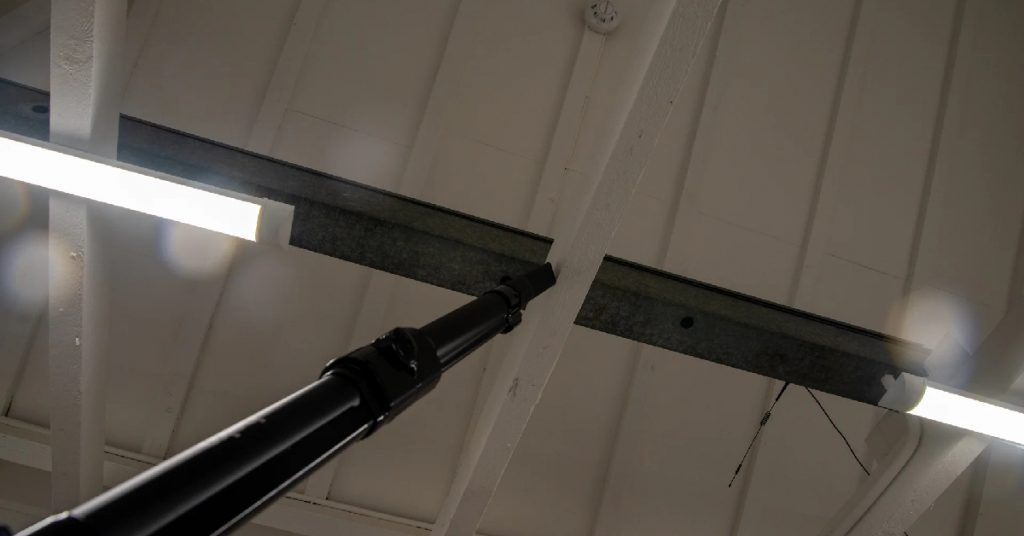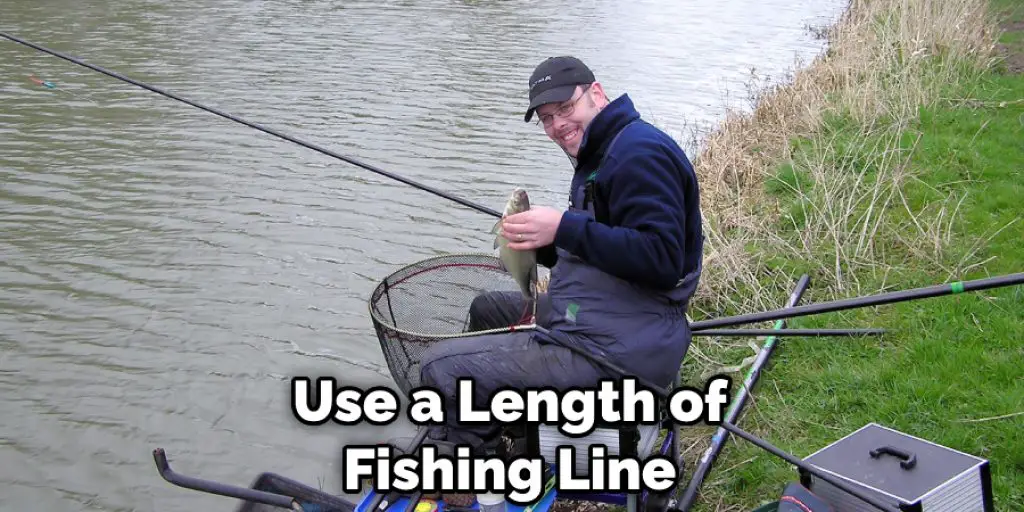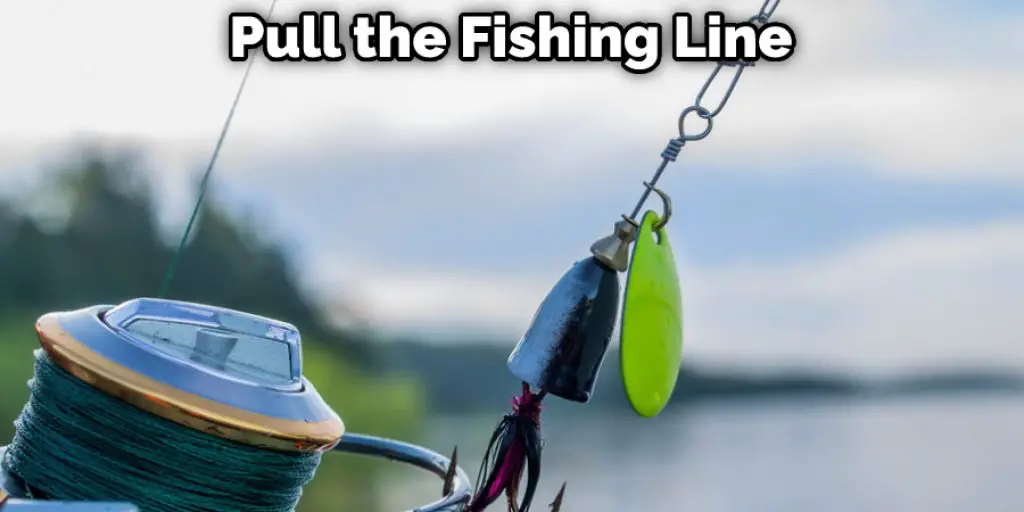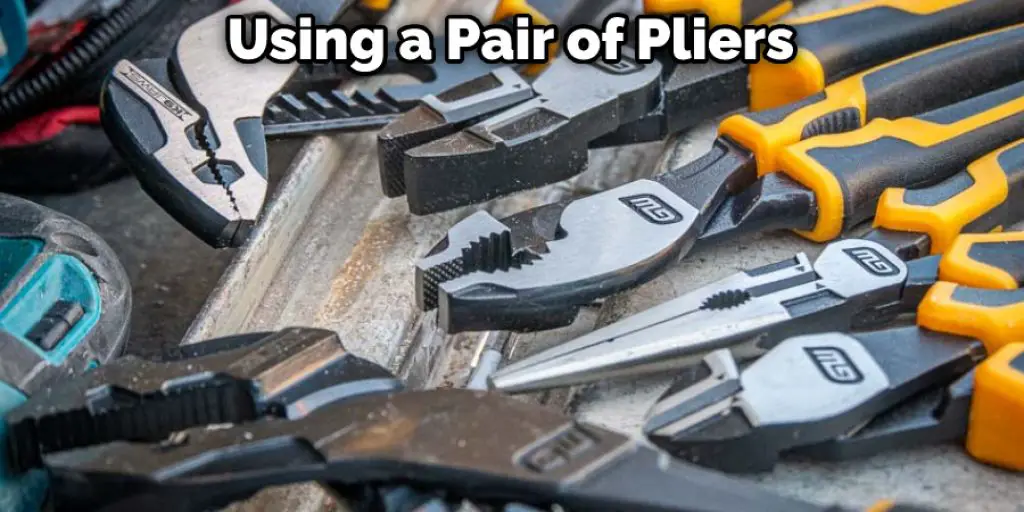You may need to fish wire through the ceiling joists if you’re looking to install a new light fixture or ceiling fan. This can be a bit tricky, but with the right tools and techniques, it’s a job that anyone can do. This article will show you how to fish wire through ceiling joists. Keep reading to learn more.

Why You May Need to Fish Wire Through Ceiling Joists
There are a few reasons why you may need to fish wire through ceiling joists. For example, you may need to run new electrical wiring for a light fixture or ceiling fan. Or, you may need to add a new outlet to an existing circuit. In any case, you’ll need to fish the wire through the ceiling joists, so it’s hidden from view. This can be tricky, but it’s doable with the right tools and techniques.
The main reason why you may need to fish wire through ceiling joists is to add new electrical wiring. If you’re adding a new light fixture or ceiling fan, you’ll need to run new electrical wiring to the location. This means that you’ll need to fish wire through the ceiling so that it’s hidden from view. In some cases, you may be able to run the wiring along the outside of the ceiling joists.
Things You’ll Need
- Tape measure
- Drill
- 1/2-inch drill bit
- Wire fishing kit
- Electrical wire
- Wire cutters
- Wire strippers
Step by Step How to Fish Wire Through Ceiling Joists
1. Measure the Distance
The first step is to measure the distance between the two ceiling joists. You’ll need to know this so that you can determine the best route for fishing the wire. Use a tape measure to get an accurate measurement. First, measure the distance from one joist to the next. Then, measure the distance from the floor to the first joist. This will give you the total length of the run.

2. Cut Holes in the Ceiling Joists
Next, you’ll need to cut holes in the ceiling joists. This will give you access to fish the wire through. Use a drill and 1/2-inch drill bit to make the holes. Drill one hole near each end of the run. First, drill a hole in one of the joists. Then, move to the other joist and drill a hole that lines up with the first one. The holes should be big enough for the wire fishing kit to fit through.
3. Drill Through the Floor Joists
Now, you’ll need to drill through the floor joists. This will give you access to fish the wire down from the ceiling. Use a long drill bit and be very careful not to damage any existing wiring. First, make a pilot hole. Then, switch to a larger drill bit and drill through the joist. If you have a lot of wires to fish through, you may need to drill several holes.
4. Use a Wire Snake
A wire snake is a tool that’s specifically designed for the fishing wire through joists. It’s a long, flexible rod with a hook on one end. To use it, insert the snake into the hole and guide it until it reaches the other side. Then, attach the electrical wire to the hook and pull it through. If you don’t have a wire snake, you can use a length of fishing line or a piece of string.

5. Attach the Wire to the Fishing Kit
Now, you’ll need to attach the wire to the fishing kit. The fishing kit consists of a length of fishing line and a weight. To attach the wire, first strip about 1/2 inch of insulation off of the end. Then, tie the wire to the fishing line. Ensure the knot is secure so it doesn’t come undone. If you’re using a wire snake, you can tie the wire to the end of the snake.
6. Feed the Wire Through the Ceiling
Now, you’ll need to feed the wire through the ceiling. Start by threading the fishing line through one of the holes. Then, guide the line through the other hole. Be careful not to damage any of the other wirings in the ceiling. Use a piece of tape to secure the fishing line to the wire if necessary. Once the fishing line is in place, start feeding the wire through the holes. Use a screwdriver to push the wire through the holes gently. Be careful not to damage the wire as you feed it through.
7. Pull the Wire Through the Floor
Now, you’ll need to pull the wire through the floor. Start by threading the fishing line through one of the holes you drilled in the joist. Then, pull the fishing line through until you have about 3 feet of slack. Next, take the wire and tie it to the fishing line. Ensure the knot is tight so the wire doesn’t lose. Finally, pull the wire through the floor until it comes out of the other hole.

8. Cut the Wire to Length
Once the wire is in place, you’ll need to cut it to length. Use a pair of wire cutters to cut the wire where it meets the floor joist. First, strip about 1/2 inch of insulation off the wire’s end. Then, cut the wire at a 45-degree angle. Finally, twist the end of the wire to keep it from fraying. Be sure to leave enough slack so that you can make all of the necessary connections.
9. Install the Wire Clamps
Now, you’ll need to install the wire clamps. Wire clamps are used to secure the wire to the joists. They come in various sizes, so be sure to select the size that will fit your joists. To install the wire clamp, first, determine where you want to position it on the joist.
Then, using a drill, create a pilot hole in the joist at the desired location. Next, insert the wire clamp into the pilot hole and tighten the screw to secure it in place. Repeat this process for each wire clamp that you need to install. Once all of the clamps are in place, you can proceed to the next step.
10. Use Wire Ties
Now, you’ll need to use wire ties to secure the wire. Wire ties are used to keep the wire in place and to make sure that it doesn’t become tangled. You’ll want to use them every few feet or so.
First, determine where you want to position the wire tie on the joist. Then, using a pair of pliers, twist the wire tie around the wire. Be sure to leave enough slack so that you can make all of the necessary connections.

11. Make the Connections
Finally, you’ll need to make the connections. Once you have all of the wires in place, you can start making the connections. First, you’ll need to connect the black wire to the black wire from the electrical box.
Then, you’ll need to connect the white wire to the white wire from the electrical box. Finally, you’ll need to connect the ground wire to the green screw on the electrical box. With all of the connections made, you can now turn on the power and test your work.
You Can Check It Out to Remove Led Strip Lights From Ceiling
How Much Wire Do You Need?
Now that you know how to fish wire through ceiling joists, you may be wondering how much wire you need. The answer to this question depends on a few factors, such as the length of the run and the number of devices you’ll be connecting.
A good rule of thumb is to use at least two feet of wire for each device you connect. For example, if you’re connecting three light fixtures, you’ll need at least six feet of wire. If you’re unsure how much wire you need, it’s always better to err on the side of caution and use more than you think you’ll need.
Tips and Warnings on How to Fish Wire Through Ceiling Joists
Tips:
- Be sure to use the correct size drill bit for your wire.
- If you are running multiple wires, it may be easier to drill several smaller holes rather than one large one.
- Always wear safety glasses when drilling.
- 4. Use a piece of tape to mark the spot where you will be drilling so that you don’t lose your place.
- Start drilling slowly and then increase the speed as you go.
- If you feel the drill getting too hot, take a break and let it cool down before continuing.
Warnings:
- Be careful not to drill into any electrical wires.
- Always get permission from your landlord or homeowner’s association before making any changes to the ceilings.
- Make sure that you are not drilling into a support beam or other structural element of the house.
Conclusion
Fishing wire through ceiling joists is a great way to install wiring, internet cables, and other types of infrastructure without having to drill holes in the walls. This guide how to fish wire through ceiling joists provides all the information you need to know about fishing wire through ceiling joists, from selecting the right tools to making sure the job is done properly. So what are you waiting for? Start fishing. Thanks for reading!








